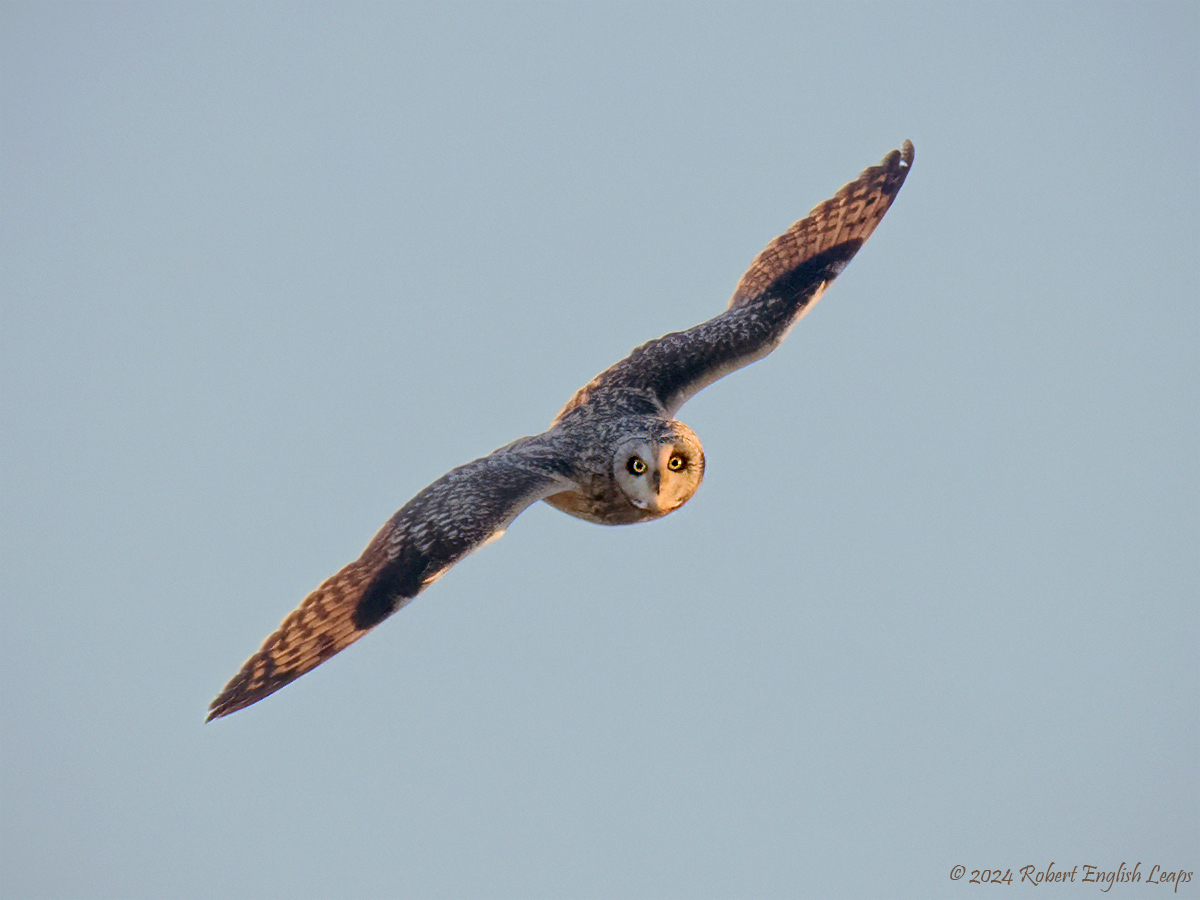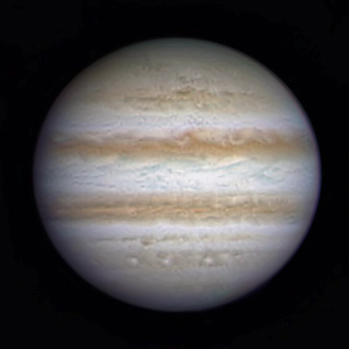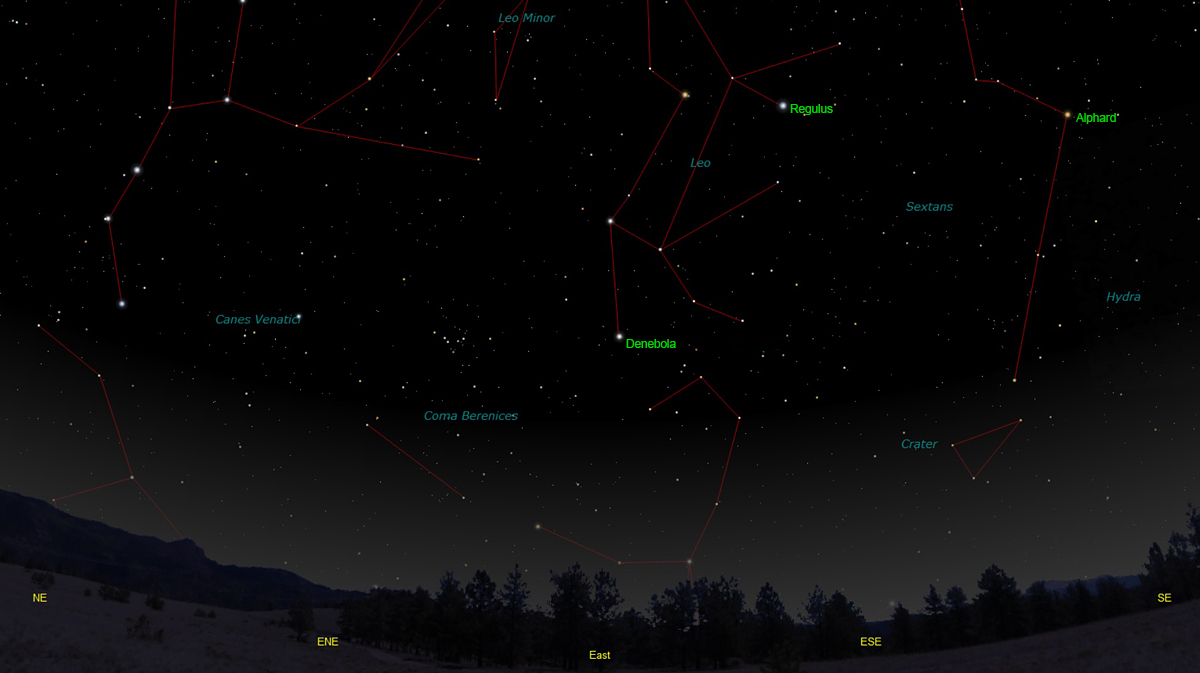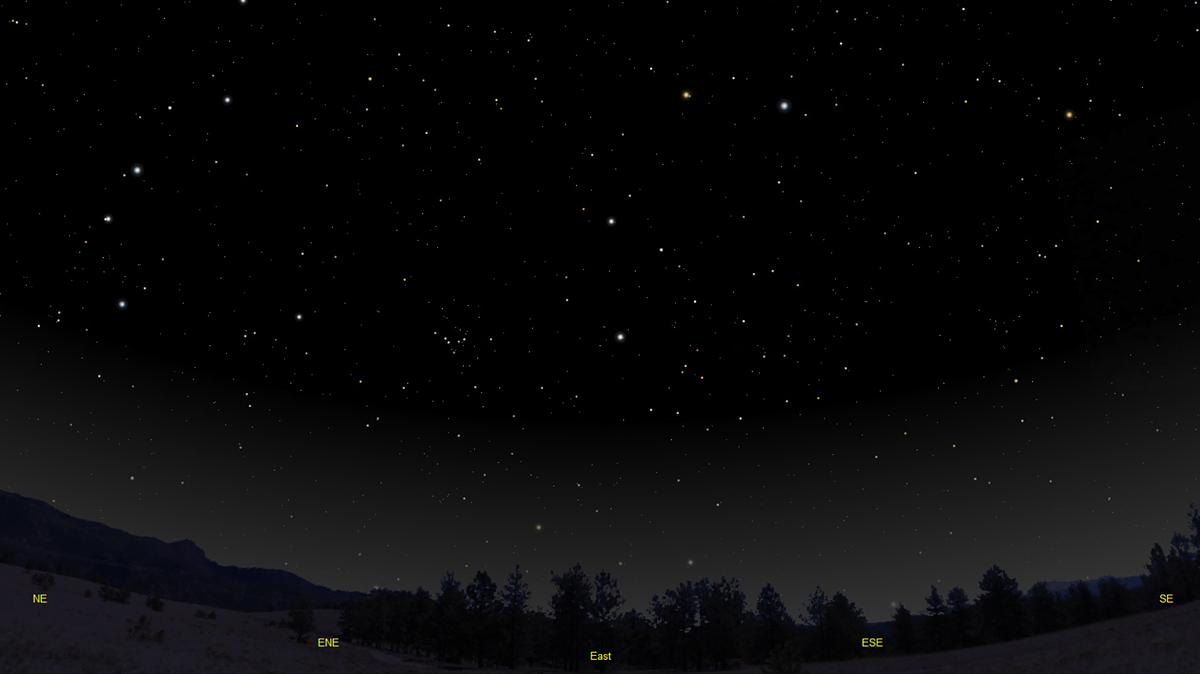The purpose of this feature is to give scout leaders, educators and naturalists an idea of some of the natural events coming up each month. We will try to cover a variety of natural events ranging from sky events to calling periods of amphibians, bird and mammal watching tips, prominent wildflowers and anything else that comes to mind. We will also note prominent constellations appearing over the eastern horizon at mid-evening each month for our area for those who would like to learn the constellations. If you have suggestions for other types of natural information you would like to see added to this calendar, let us know! Though we link book references to nationwide sources, we encourage you to support your local book store whenever possible.
Notes From January 2024 January 13th found me standing beside a Sandhill Crane Mitigation Area near Eagleville, Tennessee. The area is great for birding and I wanted to try to get some images of Short-eared Owls there. The owls had been reported for some time in the general vicinity of the mitigation area, but this was the first chance I had to make the two-hour drive up there from Cloudland. High over the wetland two Northern Harriers, an adult female and a juvenile, were having a dispute that involved some pretty fancy aerobatics. The upper bird in the image below, with a buffy mostly un-streaked breast, is the juvenile. It was approaching the female from behind and above. The female abruptly flipped inverted with her talons up. The maneuverability of these birds, so well utilized in their ability to hunt the grassy wetlands, is amazing! They had a couple of skirmishes without actually locking talons before going their separate ways.
The Harriers were a good sign, as I've often seen Harriers using the same habitat as Short-eared Owls. It's like the Harriers work the day shift and the Short-eared Owls work the night shift. Sometimes the two species spar with each other at shift change. It was a pretty afternoon and I had lots of birds. I knew that I would probably have to wait till the sun got a little lower before I had much chance to see the owls. After I'd been there a while, I got word that an owl had been seen in a field just a few hundred yards away. I was there a few minutes later and, just after I checked the manual settings on my camera and lens, a Short-eared Owl rose from the field. It circled above the field, catching a final few rays of sunlight.
After the owl had made a couple of circles, it dove down to the field after some kind of prey. When it flew it flew farther away. My subsequent images that afternoon were taken at a greater distance and were not as good, but I'm happy that I had a chance to get a few relatively close shots.
Short-eared Owls are a winter resident in Tennessee, typically arriving in mid November and leaving in late March. They like open areas, brushy fields and " grass with its feet wet". They tend to like the same habitat as Northern Harriers, and if you see Northern Harriers you may be in a good habitat for Short-eared Owls. It was nice to see four Sandhill Cranes flying over the Sandhill Crane mitigation area. It seemed to be serving its purpose well. The total acreage is 91 acres, of which 68 acres have been developed as wetland habitat. The wetland habitat modifications were completed in 2021 by RES. It is gratifying to see work like this being done. It was an enjoyable afternoon, and I didn't leave the area and drive home until the last bit of light faded. On January 20th I decided to go outside and try to spot the planets visible in the predawn sky. A cold front had dropped temperatures down to 5 degrees Fahrenheight. I put on several warm layers, including my warmest coat, before stepping outside with my binoculars. I spotted Venus and used it to guide me to Mercury, which was fairly easy to see in binoculars. Just when I thought it might be too late, I spotted Mars over a notch in the treeline. Mars will be visible at some time of the night all the way through its next opposition in January 2025 and on till late fall 2025. It will rise fairly close to sunup for a while, so binoculars really help spot it. A good time to start looking for early rising planets is about 40 minutes before sunrise. Returning to the house that morning I saw that the pond beside the house had completely frozen over! I took this image as the Sun was coming up over the east side of Lookout Mountain.
We found the pond teeming with all sorts of life. At right are some of the creatures we found. All but the dragonfly larva are quite small, less than 3 millimeters in length. The cyclops, Daphnia and seed shrimp are all freshwater crustaceans. Cyclops are found in still freshwater ponds and lakes. They feed on bacteria, algae and organic debris in the water. Like Daphnia and seed shrimp, they provide an important food source for aquatic insect larvae like dragonfly larvae and for small fish. Seed shrimp are scavengers that feed on dead plants and animals. They look like tiny flying saucers moving around their habitat. Daphnia are also called water fleas. Like cyclops, they feed on algae, microscopic animals and organic debris. The dragonfly larvae are voracious eaters. The larvae will emerge in the spring and become amazing aerial predators, with some of the quickest reaction times In the animal kingdom. Happily for pond life, water is densest at about 4 degrees Centigrade, or 39 degrees Fahrenheit. This warmer water sinks to the bottom of the pond when the pond ices over. The ice reduces the effects of the wind's convective heat transfer and reduces the mixing of water layers in the pond. .Sky Events for February 2024:
Jupiter remains in Aries this month. Look for it at dusk due south, about 66 degrees above the horizon. It will be the brightest star-like object in the sky in the early evening. Over two-thirds of the combined mass of all of the solar system's planets is in your field of view when you aim your telescope at Jupiter. You will want to begin right at dusk to get the best conditions to view Jupiter. There's a lot to see on Jupiter. Even with just a good pair of binoculars you can see Jupiter appears as a small disk rather than a point like a star. You can often see one or more of the four Galilean moons. A six-inch aperture telescope will show the Great Red Spot, a long-lasting storm in Jupiter's clouds shown in the image at right, and some of the belts, though those are of lower contrast visually than they appear in images. The planet rotates in just under 10 hours, so in a single night you can watch the Great Red Spot rotate from one side of the planet to the other. Saturn is in Aquarius this month, and is quite low to the south-southwest horizon at dusk at the beginning of the month. To catch it at all you must look for it early in the evening.
Morning Sky: Venus sinks lower towards the southeast horizon as the month goes on. At the beginning of the month you may be able to spot Mercury in binoculars down and to the left of Venus just above the horizon. Mars is between Mercury and Venus. Mercury will sink lower each day and will disappear into the twilight glow. Mars will rise a little earlier each day and will pass with 0.6 degree of Venus on February 22nd.
The views below show the sky looking east at 10:00pm EST on February 15th. The first view shows the sky with the constellations outlined and names depicted. Star and planet names are in green. Constellation names are in blue. The second view shows the same scene without labels. Ursa Major, the Great Bear, is now prominent in the northeast. It contains quite a few bright galaxies and other deep sky objects. The nearby galaxies Messier 81 and Messier 82 can be spotted as dim small glows with binoculars on dark moonless nights. All of the bright stars of Leo, the Lion, are visible now, including Denebola, the bright star at the tip of the Lion's tail. Part of the constellation of Virgo is visible below Leo. It's handy to know where Denebola is, because below it, if you imagine sliding down the Lion's tail, is the great Virgo cluster of galaxies.Messier 96, shown in the image above, is a beautiful galaxy that has other distant background galaxies shining through it. It's located about 1/3rd of the way along a line from Regulus to Denebola. You can scroll around the annotated full size luminance version of the above image, showing the distant galaxies and a quasar at a distance of 11 billion light-years here. Left of Denebola, on a line towards the handle end of the "big dipper," you will see the faint star cluster Mellotte 111, in Coma Berenices. The little constellation of Crater has now cleared the horizon. On Learning the Constellations: We advise learning a few constellations each month, and then following them through the seasons. Once you associate a particular constellation coming over the eastern horizon at a certain time of year, you may start thinking about it like an old friend, looking forward to its arrival each season. The stars in the evening scene above, for instance, will always be in the same place relative to the horizon at the same time and date each February. In particular, learn the brightest stars (like Regulus and Denebola in the above scene), for they will guide you to the fainter stars. Once you can locate the more prominent constellations, you can "branch out" to other constellations around them. It may take you a little while to get a sense of scale, to translate what you see on the computer screen or what you see on the page of a book to what you see in the sky. Look for patterns, like the stars of Leo. The earth's rotation causes the constellations to appear to move across the sky just as the Sun and the Moon appear to do. If you go outside earlier than the time shown on the charts, the constellations will be lower to the eastern horizon. If you observe later, they will have climbed higher. As each season progresses, the earth's motion around the sun causes the constellations to appear a little farther towards the west each night for any given time of night. If you want to see where the constellations in the above figures will be on March 15th at 10:00pm EST, you can stay up till 12:00am EST on the February 16th and get a preview. The westward motion of the constellations is equivalent to two hours per month. Recommended: Sky & Telescope's Pocket Star Atlas is beautiful, compact star atlas. A good book to learn the constellations is Patterns in the Sky, by Hewitt-White. For sky watching tips, an inexpensive good guide is Secrets of Stargazing, by Becky Ramotowski.
A good general reference book on astronomy is the Peterson
Field Guide,
A Field Guide to the Stars and Planets, by Pasachoff. The book retails for around $14.00.
The Virtual Moon Atlas is a terrific way to learn the surface features of the Moon. And it's free software. You can download the Virtual Moon Atlas here. Apps: The Sky Safari 6 basic version is free and a great aid for the beginning stargazer. I really love the Sky Safari 6 Pro. Both are available for iOS and Android operating systems. There are three versions. The Pro is simply the best astronomy app I've ever seen. The description of the Pro version reads, "includes over 100 million stars, 3 million galaxies down to 18th magnitude, and 750,000 solar system objects; including every comet and asteroid ever discovered." You may also want to try the very beautiful app Sky Guide. Though not as data intensive as Sky Safari, Sky Guide goes all out to show the sheer beauty of the night sky. Great for locating the planets.
Amphibians:
Recommended: The Frogs and Toads of North America, Lang Elliott, Houghton Mifflin Co.
Archives (Remember to use the back button on your browser, NOT the back button on the web page!) Natural Calendar December 2023 Natural Calendar November 2023 Natural Calendar September 2023 Natural Calendar February 2023 Natural Calendar September 2022 Natural Calendar February 2022 Natural Calendar December 2021 Natural Calendar November 2021 Natural Calendar September 2021 Natural Calendar February 2021 Natural Calendar December 2020 Natural Calendar November 2020 Natural Calendar September 2020 Natural Calendar February 2020 Natural Calendar December 2019 Natural Calendar November 2019 Natural Calendar September 2019 Natural Calendar February 2019 Natural Calendar December 2018
Natural Calendar February 2018 Natural Calendar December 2017 Natural Calendar November 2017 Natural Calendar October 2017Natural Calendar September 2017 Natural Calendar February 2017 Natural Calendar December 2016 Natural Calendar November 2016 Natural Calendar September 2016Natural Calendar February 2016 Natural Calendar December 2015 Natural Calendar November 2015 Natural Calendar September 2015 Natural Calendar November 2014 Natural Calendar September 2014 Natural Calendar September 2013 Natural Calendar December 2012 Natural Calendar November 2012 Natural Calendar September 2012 Natural Calendar February 2012 Natural Calendar December 2011 Natural Calendar November 2011 Natural Calendar September 2011 Natural Calendar December 2010 Natural Calendar November 2010 Natural Calendar September 2010 Natural Calendar February 2010 Natural Calendar December 2009 Natural Calendar November 2009 Natural Calendar September 2009 Natural Calendar February 2009 Natural Calendar December 2008 Natural Calendar November 2008 Natural Calendar September 2008 Natural Calendar February 2008 Natural Calendar December 2007 Natural Calendar November 2007 Natural Calendar September 2007 Natural Calendar February 2007 Natural Calendar December 2006 Natural Calendar November 2006 Natural Calendar September 2006 Natural Calendar February 2006
Natural Calendar December 2005
Natural Calendar November 2005
Natural Calendar September 2005
Natural Calendar February 2005
Natural Calendar December 2004
Natural Calendar November 2004
Natural Calendar September 2004
Natural Calendar February 2004
Natural Calendar December 2003
Natural Calendar November 2003 Natural Calendar February 2003 Natural Calendar December 2002 Natural Calendar November 2002 Nature Notes Archives: Nature Notes was a page we published in 2001 and 2002 containing our observations about everything from the northern lights display of November 2001 to frog and salamander egg masses. Night scenes prepared with The Sky Professional from Software Bisque All images and recordings © 2024 Leaps
|
|









